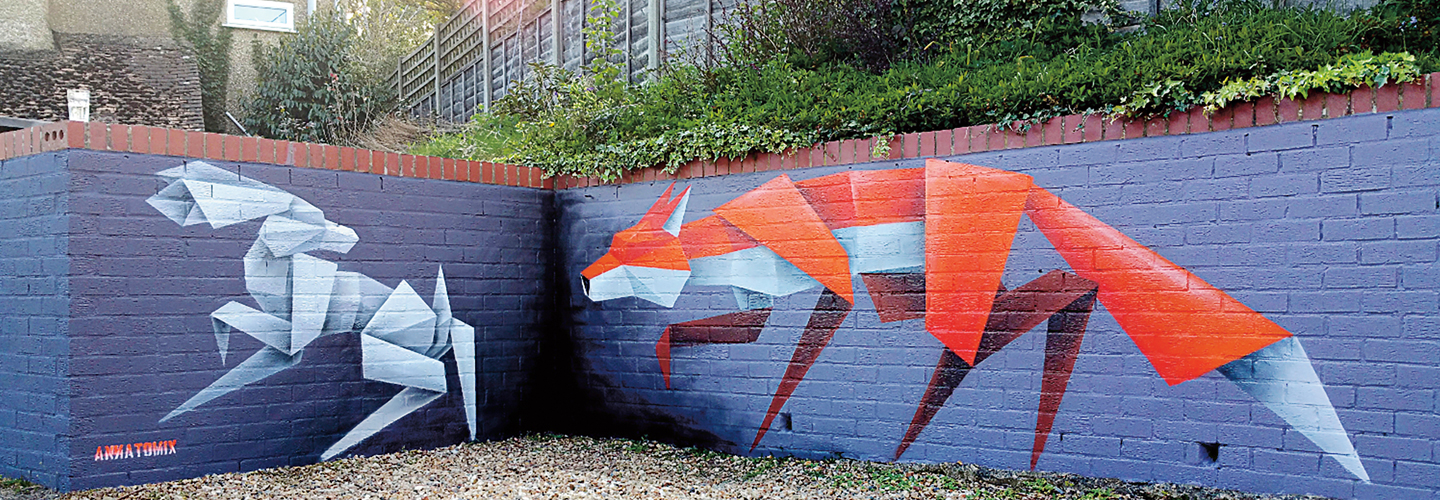As a child, Anna Stus loved drawing animals. Other kids noticed. They asked her to draw pictures of horses for them.
Today, Stus is a full-time artist living in Birmingham, England. Using the name Annatomix, she creates paintings and large murals. The animals in her work are made out of triangles, parallelograms, and other geometric shapes.
Stus wasn’t always an artist. In fact, she didn’t even study art in school. Previously, Stus worked as a sound engineer in the music industry. She decided to change careers after her son was born seven years ago.
As a child, Anna Stus loved drawing animals. Other kids noticed. They asked her to draw pictures for them. Often they asked for horses.
Today, Stus is a full-time artist. She lives in Birmingham, England. She creates paintings and large murals. She signs her work with the name Annatomix.
The animals in her work are made out of geometric shapes, They include triangles and parallelograms, to name a few.
Stus wasn’t always an artist. In fact, she didn’t even study art in school. Previously, Stus worked as a sound engineer in the music industry. But then, seven years ago, her son was born. So she decided to change careers.

